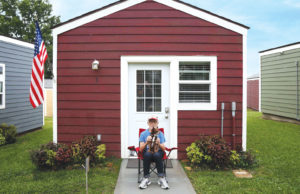Inventory control, coupled with last-minute shopping and the
post-holiday-bargain hunt drove better-than-expected December sales for
U.S. retailers, prompting several of them to raise their profit
outlooks.
expects a higher fourth-quarter profit, which topped analysts’ average
estimate, after its December same-store sales rose 0.4 percent, while
Sales at
sales rose 9 percent, exceeding the 7.2 percent average estimate in the
Retail Metrics projection. On the specialty-retail front, results were
mixed.
December sales are especially key for retailers because the month is the biggest of their year.
Merchants kept their inventories lean this holiday
season to avoid revisiting the year-ago scenario in which some
ultimately had to cut prices more than 70 percent to clear excess
stock. While signs of such deep price cuts were also seen in store
windows in the final days before Christmas 2009, retailers were able to
hold their ground without fire sales, and that bodes well for their
fourth-quarter results, analysts said.
Post-Christmas, shoppers also showed up in stores to
redeem their gift cards or snatch up items in clearance sales, analysts
said. According to traffic tracker ShopperTrak,
An extra selling day before Christmas has also
lifted December sales, analysts have said. Colder weather, meanwhile,
spurred shoppers to purchase coats and other seasonal merchandise. That
offset the negative impact of a snowstorm’s having hit the Northeast
and Mid-Atlantic regions the Saturday before Christmas, traditionally
one of the key retail season’s top days, they said.
With their confidence improving alongside a slowing
rate of job losses, shoppers also became more self-indulgent. According
to a panel survey of 400 women by research and consulting firm
during the holidays, about 5 percent more than they’d spent a year
earlier and almost 30 percent higher than their own average November
projection.
As a sign that spending on non-essential items has gradually picked up, home-furnishings retailer
Analysts had raised their December same-store-sales estimate by an average 0.3 percentage points since
on Tuesday also raised its December estimate to a 2.5 percent increase
from 2 percent. That would be welcome news after November sales
disappointed.
To be sure, analysts said, the expected improvement in December is not widespread and is far from dizzying.
Retailers, owing to their lean-inventories
positioning, also may not have had sufficient merchandise on their
shelves to satisfy post-Christmas shoppers, limiting sales, the
shopping-center trade group’s chief economist,
Absent holiday-related shopper motivations, the
outlook may be less bright for January and February, with unemployment
remaining at 10 percent, according to analysts.
Overall, discounters and those perceived as offering
attractive prices in their respective groups are expected to have fared
better, repeating a trend in evidence since the start of the recession.
—
(c) 2010, MarketWatch.com Inc.
Visit MarketWatch on the Web at http://www.marketwatch.com
Distributed by McClatchy-Tribune Information Services.














